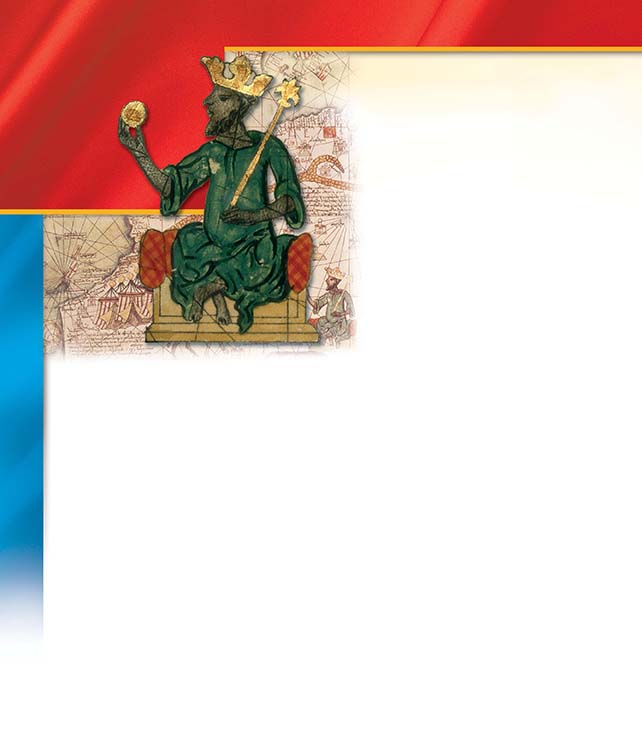SECTION 3: The West Africans

▲ Mansa Musa, ruler of Mali
WITNESS HISTORY  AUDIO
AUDIO
Timbuktu
The city of Timbuktu first flourished as a trade center in the kingdom of Mali before becoming the intellectual center of West Africa. In the early 1500s, Leo Africanus, a Muslim of Spanish birth who had traveled widely in Africa, published his description of the great West African city of Timbuktu. It tells of the learned populace—and of a practice that would have a deep impact on West Africa’s future.
“The people of Timbuktu are of a peaceful nature. They have a custom of almost continuously walking about the city in the evening (except for those that sell gold), between 10 P.M. and 1 A.M., playing musical instruments and dancing. The citizens have at their service many slaves, both men and women.”
—Leo Africanus, The Description of Africa, 1526
Objectives
- Describe the development and cultural characteristics of West Africa in the fifteenth century.
- Summarize the events that led to contact between Europeans and West Africans.
- Explore the roots of the system of slavery practiced in the Americas.
Terms and People
- Ghana
- Mali
- Mansa Musa
- Songhai
NoteTaking
Reading Skill: Identify Details As you read, complete a concept web like the one below with details about major West African kingdoms.

Trade
Ghana
West Africa
Why It Matters While American Indian cultures developed in the Americas and Europeans experienced the Renaissance, rich and varied cultures emerged in West Africa. The interaction between European and West African cultures in the 1400s helped set the stage for the transatlantic system of slavery. Section Focus Question: What was life like in West Africa before the age of European exploration?
West African Kingdoms
Throughout the 1400s, Portuguese sailors explored farther and farther south along the West African coast. By 1470, they had passed the equator to reach the Gulf of Guinea. Initially, the mariners acted as pirates, seizing gold, pepper, and slaves. But African resistance soon forced the Portuguese to shift to trade. The West Africans possessed civilizations that compelled grudging respect from the European mariners.
Geography Encourages Trade
Western Africa is a varied land. An enormous desert—the Sahara—dominates the northern part. To the south of the Sahara lies a broad grassland, or savanna. South of this savanna is a lush region that is well watered by several major rivers, including the Niger and the Senegal. The West African landscape abounds with valuable natural resources—in particular, salt, found in the Sahara, and gold, located in the valleys along the Atlantic coast.




